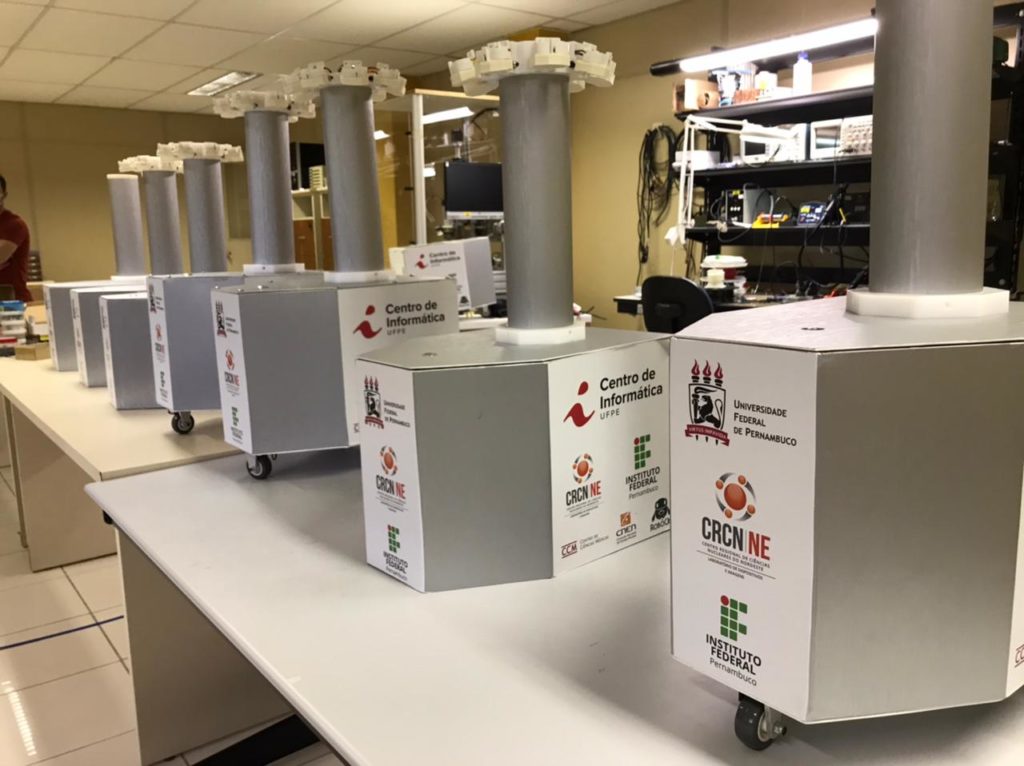São Paulo – Developed in nine months to fight the coronavirus in closed environments, the Brazilian robot Aurora 2.0 is now going through an adjustment process to combat pests that harm agriculture. At the same time researchers from Pernambuco who developed it discuss partnerships so that the device can be marketed, they are working on a new version for agribusiness.

According to one of the researchers who created Aurora, Leandro Almeida, professor at the Department of Informatics at the Federal University of Pernambuco (UFPE), the opportunity to develop the device came up in May last year, with the publication of a specific public notice for carrying out research that resulted in means to prevent and fight the coronavirus. Aurora is one of the results.
“When the notice was published, we joined forces with people from different areas to seek this solution. Brazil is still lagging in robotics technology and, when these devices arrive here, the cost is very high. It (Aurora) is suited to our realities, has a lower cost compared to devices from other countries, and is simple to operate,” states Almeida. If produced and sold on a commercial scale, the robot can have a final cost between BRL 40,000 and BRL 120,000 (equivalent to between USD 7,600 and USD 22,800). “The similar imported devices do not sell for less than BRL 700,000 [equivalent to USD 132,500],” he says.
The technology applied in Aurora uses ultraviolet radiation and is already widely known to the scientific community. Operated by a smartphone app, Aurora is targeted at the area in which you want to eliminate viruses and bacteria. In this environment, always closed and without human presence, lamps that emit radiation are activated. This radiation causes mutations in the DNA and RNA of the microorganisms that are then killed. Thereafter, the robot leaves the environment. From this moment, the area can be occupied again. The use of Aurora does not eliminate the need to maintain usual sanitation protocols for the environment.
Aurora is currently in use at UFPE’s Clinical Hospital. It is recommended for hospital and clinical environments, but it can also be adopted in hotels, restaurants, shopping malls, schools, and places with a high flow of people. In these cases, it is particularly necessary to adopt usage protocols that prevent people from being in the same environment as the robot while it “works”, explains Almeida. Radiation is harmful to humans and, in the case of Aurora, much greater than that coming from the sun.
Studies for agriculture

Now, in addition to negotiating eventual partnerships for the sales, the researchers who developed Aurora are seeking to adapt it for use in agriculture. This adaptation will originate a new robot. Some laboratory tests have analyzed the effectiveness of the radiation emitted by the robot to fight fungi that threaten the cultivation of tomatoes. In theory, the radiation to fight crop pests is less than that needed to kill microorganisms such as superbugs and the coronavirus, says Almeida. If it proves to be efficient, it can even eliminate the need to apply pesticides to food. Aurora is always applied indoors. In the case of agriculture, therefore, it needs to be used in greenhouses.
Although there are still no negotiations with international partners, Almeida affirms that its adoption abroad should not come up against major barriers, precisely because UV radiation is already very widespread. “Some countries, like Canada, issue recommendations for use, the United States as well. I believe that to be exported, it would be necessary to receive a certification, but it should not be a lengthy process because of the technology employed, which is already known,” says Almeida.
In addition to the professors at UFPE, the team that developed Aurora 2.0 has researchers from the Center for Medical Sciences at UFPE, the Federal Institute of Pernambuco (IFPE), and the Regional Center for Nuclear Sciences of the Northeast.
* Special report by Marcos Carrieri for ANBA
Translated by Elúsio Brasileiro




